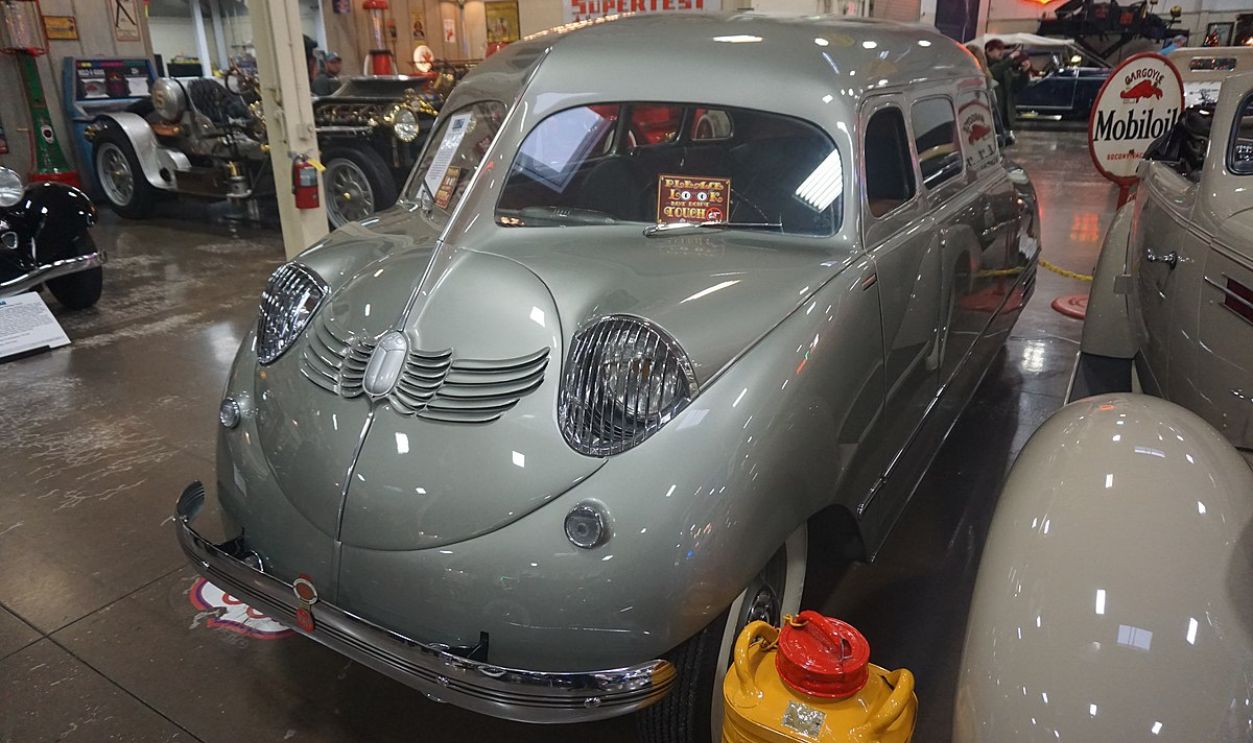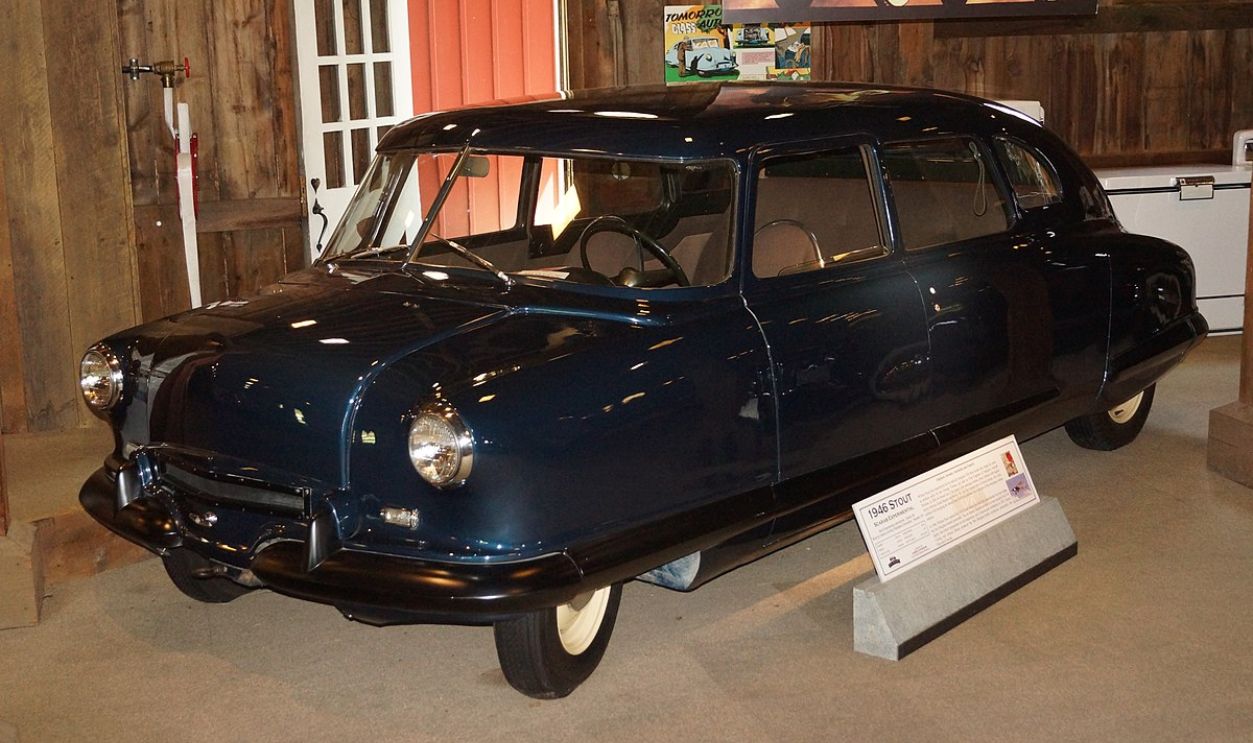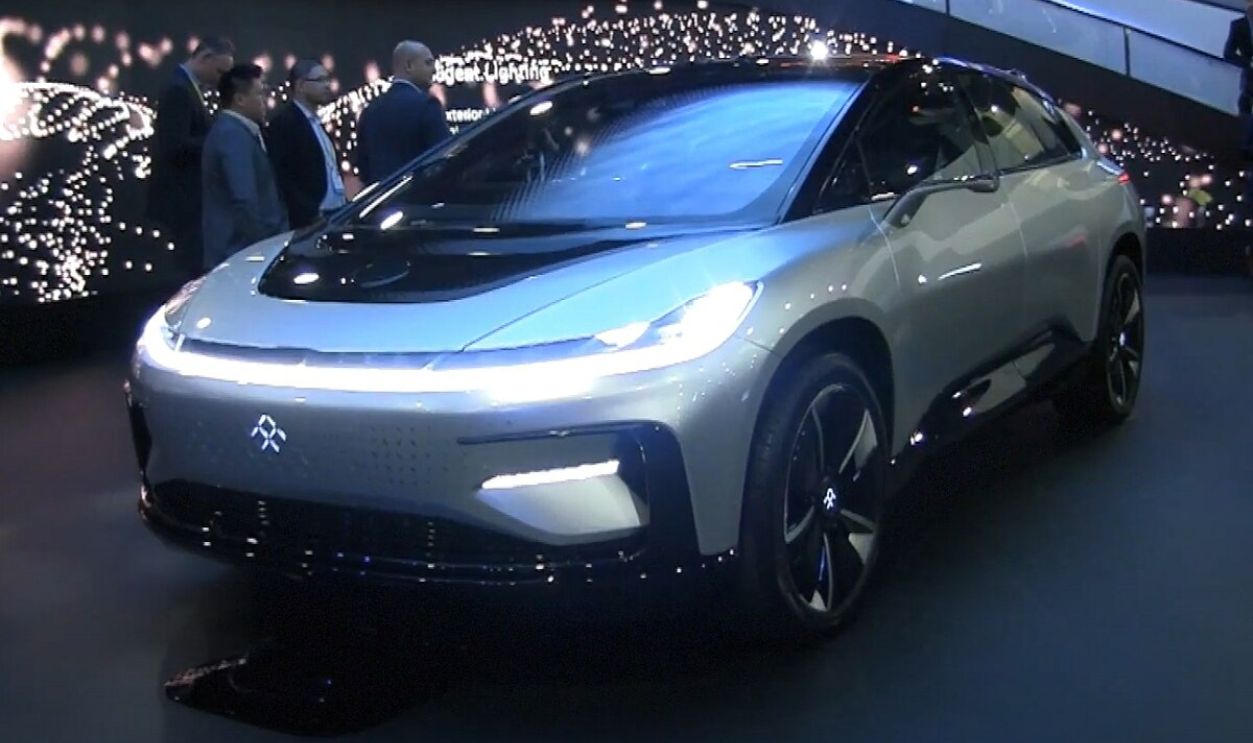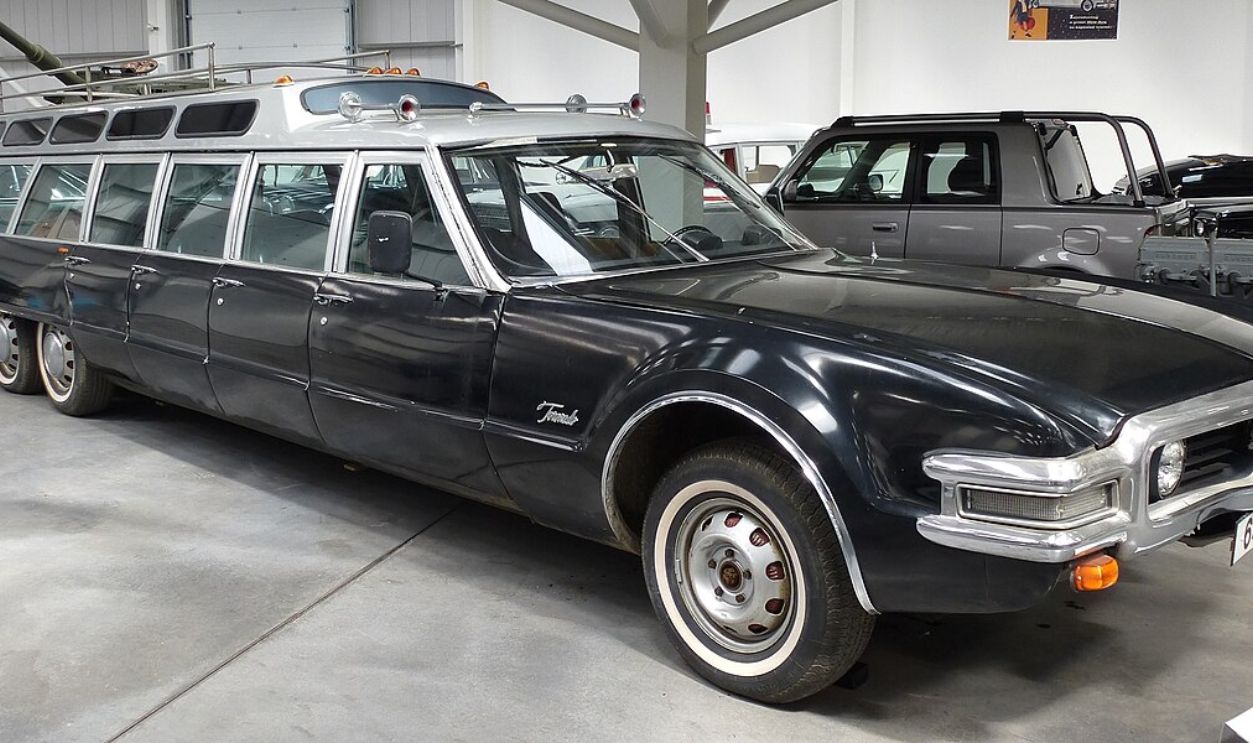The Oddest Vehicles In Automotive History
The first time people saw an actual car, they probably had different feelings regarding this weird-looking invention. Fast forward more than 100 years later, which vehicles still dazzle us with groundbreaking designs and forward-thinking engineering? Let’s have a look.

Ferrari Modulo
Ferrari built the Modulo in 1970 as a concept car to show radical design and aerodynamic principles. The car had an ultra-flat, wedge-shaped body with a height of only 36 inches. It lacked traditional doors; instead, the entire roof slid forward to allow entry.
 Morio, CC BY-SA 3.0, Wikimedia Commons
Morio, CC BY-SA 3.0, Wikimedia Commons
Ferrari Modulo (Cont.)
The Modula was powered by a 5.0L V12 engine capable of reaching 220 mph. Despite not making it to mass production, it has appeared in exhibitions and inspired countless sci-fi car designs. It’s now owned by collector Jim Glickenhaus, who made it drivable.
 Morio, CC BY-SA 3.0, Wikimedia Commons
Morio, CC BY-SA 3.0, Wikimedia Commons
Chrysler Atlantic
Shown as a concept car in 1995, the Atlantic was a homage to the 1930s Art Deco era and vehicles like the Bugatti Type 57S Atlantique. It had flowing lines and prominent fender curves. But it was purely a design study and never intended for production.
 zombieite, CC BY 2.0, Wikimedia Commons
zombieite, CC BY 2.0, Wikimedia Commons
Chrysler Atlantic (Cont.)
Starting out as a sketch on a napkin, two designers worked on making it come to life. They fitted it with a 4.0-liter inline-eight engine, created by joining two Neon engines, which produced around 360 hp to show Chrysler’s commitment to mixing classic elegance with modern technology.
 Tom Kredatus, Photographer, Wikimedia Commons
Tom Kredatus, Photographer, Wikimedia Commons
Peel P50
Despite its odd design, the three-wheeled Peel P50 was produced from 1962 to 1965. That’s not all. It was actually revived in 2010 with new electric, gas, and petrol engines as a unique city car with the smallest footprint imaginable.
 MrWalkr, CC BY-SA 4.0, Wikimedia Commons
MrWalkr, CC BY-SA 4.0, Wikimedia Commons
Peel P50 (Cont.)
This car was listed in 2010 in the Guinness World Record for being the most miniature production car ever made, at just 54 inches long and 39 inches wide. It weighs 130 pounds and was originally powered by a 49.2 cc engine to reach a speed of about 37 mph.
 Philip (flip) Kromer from Austin, TX, CC BY-SA 3.0, Wikimedia Commons
Philip (flip) Kromer from Austin, TX, CC BY-SA 3.0, Wikimedia Commons
Chevrolet El Camino
Combining the best of both worlds, the El Camino was Chevrolet’s unique fusion of a car and a pickup truck. It was a bold attempt to blend passenger car comfort with utility truck functionality with a car-like front end with a truck bed at the rear.
 Johannes Maximilian, CC BY-SA 4.0, Wikimedia Commons
Johannes Maximilian, CC BY-SA 4.0, Wikimedia Commons
Chevrolet El Camino (Cont.)
Production took place from 1959 to 1987, with several generations and configurations and a hiatus from 1960 to 1964. Despite its hybrid nature, the El Camino was popular for its unique aesthetic and became an icon in American car culture. It made appearances in films such as Kill Bill.
 Chevrolet pre-1978, Wikimedia Commons
Chevrolet pre-1978, Wikimedia Commons
Fiat Multipla
Many experts consider the Multipla one of the weirdest cars ever made, thanks to its unconventional design. It had a bulbous and awkward appearance, with an unusually high and wide windshield and a second set of headlights mounted below it. The car could seat six people despite its small footprint.
 Rudolf Stricker, CC BY-SA 3.0, Wikimedia Commons
Rudolf Stricker, CC BY-SA 3.0, Wikimedia Commons
Fiat Multipla (Cont.)
The Multipla was highly practical for families, with ample interior room and excellent cargo space. However, its odd exterior earned it a mockery and made it an acquired taste. Despite this, Multipla found a loyal customer base and was praised for its utility.
 Corvettec6r, CC BY-SA 4.0, Wikimedia Commons
Corvettec6r, CC BY-SA 4.0, Wikimedia Commons
Leyat Hélica
Referred to as the “plane without wings”, the Leyat Hélica was a propeller-driven automobile designed by French aviation pioneer Marcel Leyat in 1913. With its lightweight construction and propeller propulsion, the Hélica resembled an airplane more than a traditional car with 30 different units built.
 Liam Walker, CC BY-SA 4.0, Wikimedia Commons
Liam Walker, CC BY-SA 4.0, Wikimedia Commons
Leyat Hélica (Cont.)
Instead of an engine, the car used a wooden propeller powered by a small internal combustion engine. Its lightweight wooden frame helped one model reach a speed of 106 mph in 1927. However, the open propeller was dangerous to bystanders, and its design made it hard to steer.
 Alexander Migl, CC BY-SA 4.0, Wikimedia Commons
Alexander Migl, CC BY-SA 4.0, Wikimedia Commons
Alfa Romeo BAT 5
Several concept cars were built from the Berlinetta Aerodinamica Tecnica or BAT series, each with specific features. The BAT 5 was introduced in 1953 to explore aerodynamic efficiency. It was built on an Alfa Romeo 1900 chassis, powered by a 100 hp engine.
 Alexander Migl, CC BY-SA 4.0, Wikimedia Commons
Alexander Migl, CC BY-SA 4.0, Wikimedia Commons
Alfa Romeo BAT 5 (Cont.)
Thanks to an exceptionally low drag coefficient of 0.23 and its lightweight body, the BAT 5 could reach 120 mph despite its modest engine. It was first introduced at the Turin Auto Show in 1953, but later opened doors to aerodynamic designs that would help cars get faster.
 Rex Gray, CC BY 2.0, Wikimedia Commons
Rex Gray, CC BY 2.0, Wikimedia Commons
Cadillac Cyclone
Currently part of the General Motor Heritage Collection, the Cadillac Cyclone was revealed in 1959 as a concept car. It had a sleek, rocket-inspired body with dramatic tail fins and a bubble-top canopy that could retract into the trunk. The car was powered by a 325 hp V8 engine.
 Yahya S. from United States, CC BY 2.0, Wikimedia Commons
Yahya S. from United States, CC BY 2.0, Wikimedia Commons
Cadillac Cyclone (Cont.)
This car was one of the last designed by Harley Earl, and it was mainly inspired by the designs of the 50s rockets. It was considered too futuristic for its time, with a radar-based collision avoidance system and sliding doors integrated into the roofline.
 Tino Rossini from Toronto, Canada, CC BY 2.0, Wikimedia Commons
Tino Rossini from Toronto, Canada, CC BY 2.0, Wikimedia Commons
Dymaxion Car
As part of his Dymaxion concept, Buckminster Fuller built the Dymaxion Car in 1933. Despite the groundbreaking design, it was plagued by stability issues, particularly at high speeds, and its unconventional steering made it difficult to handle. A tragic accident involving one of the three prototypes hurt its reputation.
 TaurusEmerald, CC BY-SA 4.0, Wikimedia Commons
TaurusEmerald, CC BY-SA 4.0, Wikimedia Commons
Dymaxion Car (Cont.)
This teardrop-shaped vehicle had room for 11 passengers and offered incredible fuel efficiency and a claimed top speed of more than 120 mph. It was run by a rear-mounted Ford V8 engine and featured a unique three-wheeled design with a single wheel at the rear for steering.
 brewbooks from near Seattle, USA, CC BY-SA 2.0, Wikimedia Commons
brewbooks from near Seattle, USA, CC BY-SA 2.0, Wikimedia Commons
Toyota LQ
With a focus on artificial intelligence, Toyota showed the LQ concept car powered by Yui at the Tokyo Motor Show in 2019. This is an AI agent that communicates with the driver to deliver a personalized driving experience by responding to individual needs and preferences.
Toyota LQ (Cont.)
Yui wasn’t the only robot in the car. Toyota fitted the LQ with Al, which could actually talk to the driver in an experiment designed to reduce stress and increase engagement. The car featured a BEV engine and multiple cameras for the automated parking system.
 TR25s, CC BY 4.0, Wikimedia Commons
TR25s, CC BY 4.0, Wikimedia Commons
BMW GINA
In 2008, BMW released what many considered a shape-shifting car. The GINA or Geometry and Functions in N Adaptations showed BMW’s willingness to rethink traditional automotive design with flexible fabric skin stretched over a lightweight aluminum and carbon fiber frame.
 Arnaud 25, CC BY-SA 4.0, Wikimedia Commons
Arnaud 25, CC BY-SA 4.0, Wikimedia Commons
BMW GINA (Cont.)
The GINA was powered by a conventional BMW engine, but its purpose wasn’t performance—it was innovation. The water-resistant polyurethane-coated Spandex allowed the car’s shape to dynamically change and adapt to aerodynamic needs or driver preferences. Parts like the headlights or doors subtly morph as needed.
 ravas51, CC BY-SA 2.0, Wikimedia Commons
ravas51, CC BY-SA 2.0, Wikimedia Commons
Austin Mini Moke
British Motor Corporation initially designed the Moke for military use as a lightweight, air-transportable exploration vehicle. However, it was later marketed for civilian use under several brands, including the Austin. It appeared in James Bond movies, such as The Spy Who Loved Me.
 Mick from Northamptonshire, England, CC BY-SA 2.0, Wikimedia Commons
Mick from Northamptonshire, England, CC BY-SA 2.0, Wikimedia Commons
Austin Mini Moke (Cont.)
The car lacked doors, a roof, and most features to deliver a simple, fun driving experience. While impractical for traditional car buyers, it found a niche among beachgoers and utility workers in warm climates who could fit the car with whatever they needed.
 ChiemseeMan, Wikimedia Commons
ChiemseeMan, Wikimedia Commons
Reliant Robin
Over 30 years, multiple versions of the Robin were produced as an affordable alternative to conventional cars. With its lightweight fiberglass body and a single wheel at the front, it was allowed to be driven with a motorcycle license and taxed at a lower rate in the UK.
 Andrew Bone from Weymouth, England, CC BY 2.0, Wikimedia Commons
Andrew Bone from Weymouth, England, CC BY 2.0, Wikimedia Commons
Reliant Robin (Cont.)
While its quirks made it popular among budget-conscious buyers, Robin’s unusual three-wheel design made it notoriously unstable, especially during cornering, where it had a tendency to tip over. Despite this, the Robin was relatively practical for its size, seating four people, and having decent fuel efficiency.
 Charles01, CC BY-SA 3.0, Wikimedia Commons
Charles01, CC BY-SA 3.0, Wikimedia Commons
Chevrolet SSR
Powered initially by a 5.3L V8 engine, later upgraded to a 6.0L LS2 V8, the SSR delivered decent performance. It featured a retractable hardtop roof, which transformed the truck into a convertible, and a carpeted cargo bed to add a touch of retro luxury.
Chevrolet SSR (Cont.)
In 2011, a heavily modified SSR was tested to break the speed record, but it proved to be unstable as it approached 200 mph. The SSR was neither practical as a truck nor agile as a sports car and struggled to find a significant audience.
 Joost J. Bakker from IJmuiden, CC BY 2.0, Wikimedia Commons
Joost J. Bakker from IJmuiden, CC BY 2.0, Wikimedia Commons
Stout Scarab
Created in 1936 by aviation engineer William Bushnell Stout, the Scarab is often considered the world’s first minivan and one of the most innovative cars of its time. This revolutionary vehicle was a concept car, though a handful were actually produced.
 Michael Barera, CC BY-SA 4.0, Wikimedia Commons
Michael Barera, CC BY-SA 4.0, Wikimedia Commons
Stout Scarab (Cont.)
Stout envisioned the Scarab as a luxurious mobile office for businessmen. The Scarab featured an aerodynamic, beetle-like body that maximized interior space, with a unibody construction and a rear-mounted Ford V8 engine. Inside, it had a configurable seating arrangement with swivel seats and a table.
 Greg Gjerdingen from Willmar, USA, CC BY 2.0, Wikimedia Commons
Greg Gjerdingen from Willmar, USA, CC BY 2.0, Wikimedia Commons
Lotus Evija
With production limited to 130 units, the Lotus Evija is an all-electric hypercar. Its design is inspired by aerodynamics and nature, with a sculpted body featuring large Venturi tunnels that guide air through the car for optimal downforce and cooling.
 MN, CC BY-SA 4.0, Wikimedia Commons
MN, CC BY-SA 4.0, Wikimedia Commons
Lotus Evija (Cont.)
Powered by a 93 kWh battery, the Evija has four motors to produce an output of more than 2,011 hp. These motors allow the car to reach 60 mph in less than 3 seconds to make the car appealing to those who can afford its hefty price.
 JustAnotherCarDesigner, CC BY-SA 4.0, Wikimedia Commons
JustAnotherCarDesigner, CC BY-SA 4.0, Wikimedia Commons
Bugatti Tank
You’d never imagine this car was produced 100 years ago. The Bugatti Type 32, or the Tank, was a revolutionary race car designed for the French Grand Prix. Unlike its contemporaries, the Type 32 featured a strikingly unconventional design with a fully enclosed, aerodynamic body that resembled a tank.
Bugatti Tank (Cont.)
Its design was heavily influenced by aircraft principles. Powered by a 2.0L straight-eight engine producing 90 hp, the Tank was notoriously unstable and difficult to handle, largely due to its short wheelbase and underdeveloped chassis. Only four units were produced before it was replaced by the Type 35.
 Rutger van der Maar, CC BY 2.0, Wikimedia Commons
Rutger van der Maar, CC BY 2.0, Wikimedia Commons
Faraday Future FF 91
Faraday Future produced the FF 91 as its first all-electric luxury SUV. Designed as a competitor to Tesla’s Model X and other premium electric vehicles, the FF 91 has a sleek body and a spacious interior as it’s aimed at tech-savvy, luxury-focused buyers who value innovation.
 Maurizio Pesce, CC BY 2.0, Wikimedia Commons
Maurizio Pesce, CC BY 2.0, Wikimedia Commons
Faraday Future FF 91 (Cont.)
This car features a smart system that allows for semi-autonomous driving. With a 142 kWh battery and a claimed 1,050 hp, the FF 91 offers impressive performance, including a 0–60 mph time of 2.27 seconds and an estimated range of over 300 miles.
 Steven Sheridan, CC BY 3.0, Wikimedia Commons
Steven Sheridan, CC BY 3.0, Wikimedia Commons
Amphicar
With more than 3,800 units produced between 1961 and 1968, the Amphicar is one of the quirkiest and most ambitious vehicles ever built. It doubled as a car and a boat and was marketed as the world’s first mass-produced amphibious car.

Amphicar (Cont.)
The 1.2L Triumph Herald engine was mounted at the rear and could reach gaits of 7 knots and 70 mph on water and the ground, respectively, hence its 770 name. Despite a sealed and buoyant body, the Amphicar offered mediocre performance on land and water.
 Jan Derk Remmers, CC BY-SA 4.0, Wikimedia Commons
Jan Derk Remmers, CC BY-SA 4.0, Wikimedia Commons
American Quality Coach Jetway 707
Based on the Oldsmobile Toronado, the American Quality Coach Jetway 707 was an elongated station wagon-based limousine designed to transport large groups in comfort. It had six wheels and was featured in All the President’s Men. The Jetway 707 was marketed primarily to hotels and shuttle services.
 Buch-t, CC BY 3.0, Wikimedia Commons
Buch-t, CC BY 3.0, Wikimedia Commons
American Quality Coach Jetway 707 (Cont.)
Its most notable feature was its rearward-facing second-row seat, along with a unique, aviation-inspired design that included aircraft-style doors for easier access. However, its size and high price limited its appeal, yet its unique design and rarity make it a curiosity among automotive enthusiasts.
 Buch-t, CC BY 3.0, Wikimedia Commons
Buch-t, CC BY 3.0, Wikimedia Commons
Aston Martin Bulldog
As a one-off prototype, the Bulldog was an ambitious attempt by Aston Martin to build the fastest production car in the world. It had a wedge-shaped body with gullwing doors and an exceptionally low profile. Its interior was equally avant-garde, with new digital features and leather upholstery.
 Ian Leech, CC BY-SA 2.0, Wikimedia Commons
Ian Leech, CC BY-SA 2.0, Wikimedia Commons
Aston Martin Bulldog (Cont.)
The Bulldog’s 5.3-liter twin-turbocharged V8 produced 600 hp in real life. The actual speed was lower than the claimed 237 mph, which the car failed to hit. Aston Martin intended to produce a limited run of 15-25 units, but financial constraints and changing priorities halted the project.
 edvvc, CC BY 2.0, Wikimedia Commons
edvvc, CC BY 2.0, Wikimedia Commons
Iso Isetta
Renzo Rivolta wanted to address post-war Europe’s need for affordable, compact transportation. So, Ermenegildo Preti and Pierluigi Raggi built an egg-shaped vehicle with a motorcycle engine and introduced the Iso Isetta in 1953. Measuring just 7.5 feet in length, it was incredibly small and ideal for urban environments.
 Thesupermat, CC BY-SA 3.0, Wikimedia Commons
Thesupermat, CC BY-SA 3.0, Wikimedia Commons
Iso Isetta (Cont.)
Its most iconic feature was the single front door that swung open to take the steering wheel and dashboard with it for easy access. It could only seat two people and was licensed to other manufacturers, including BMW, but production continued in Spain till 1958.
 Torana, CC BY-SA 3.0, CC BY-SA 3.0, Wikimedia Commons
Torana, CC BY-SA 3.0, CC BY-SA 3.0, Wikimedia Commons










